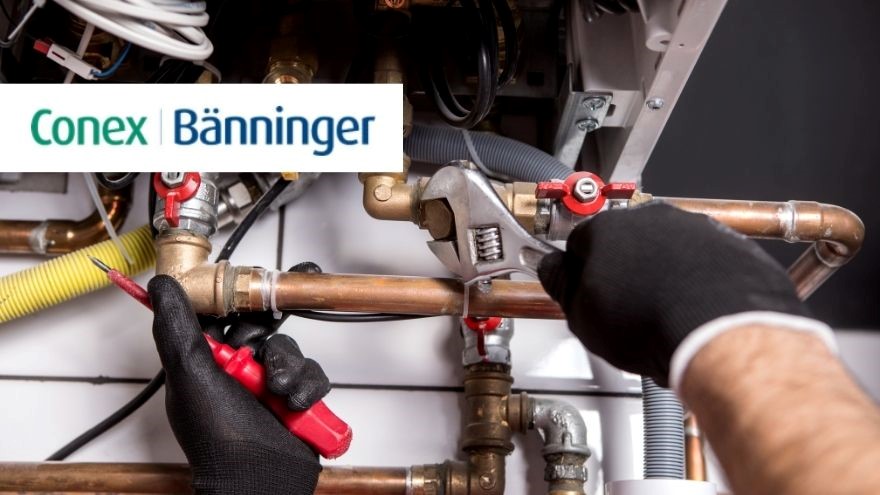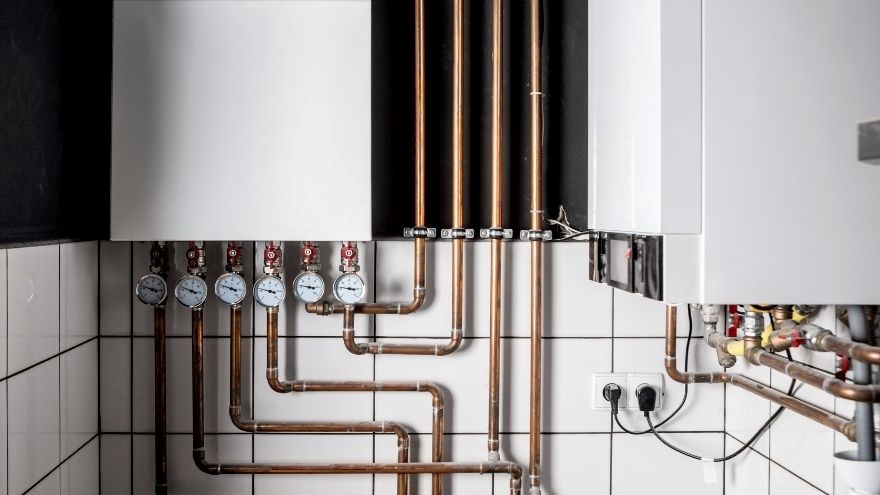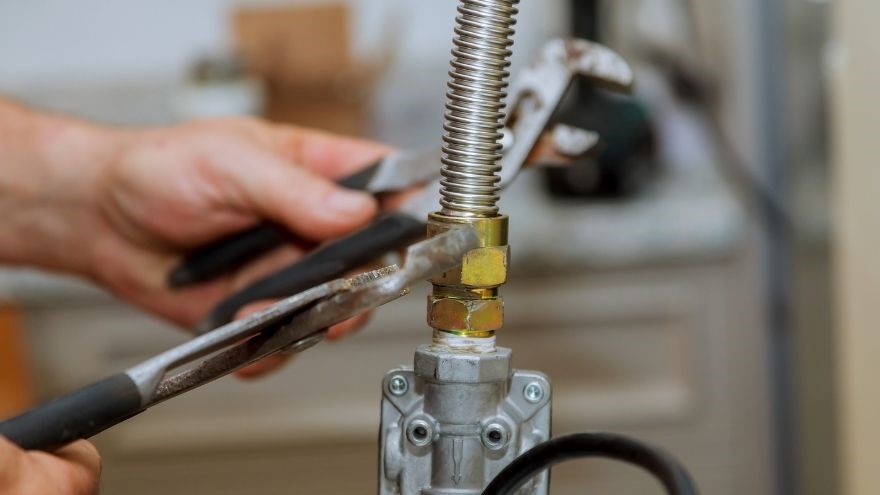The design of an internal gas installation requires a building permit and must be carried out by a contractor with the appropriate qualifications. The effect of the work will determine the safety of the system users. One of the most important parameters influencing its quality will be the pipes used during installation, as well as the fittings used to connect them. Read our guide on home gas installations!

In this article you will learn:
- what regulations govern the creation of home gas installations,
- what pipes to choose when installing a home gas system,
- what products to use to connect pipes in home gas installations.
Regulations on the creation of a home gas installation
For the safety of users of a home gas installation , certain rules must be followed when distributing pipes inside a building. They can be found, among others, in the Regulation of the Minister of Infrastructure of 12 April 2002. According to the regulations, the arrangement of horizontal pipes in the system depends mainly on the type of gas that supplies it. Below you will find detailed information that is key in the work of every installer.
First of all, pipes should be laid on top of walls, avoiding passage through living spaces. Furthermore, pipes running through rooms without windows or ventilation must be placed in seamless steel casings. Remember not to run pipes in ventilation ducts, smoke ducts, wall grooves or at a distance of less than 25 cm from flues.
Pipes for liquefied gas should be laid at the floor level , only in rooms located above ground level. Pipes with natural gas should be located under the ceiling , at least 10 cm above other installations. If they have to cross with them, it is necessary to maintain a minimum distance of 2 cm between the pipes. Self-compensation is also a very important issue, consisting in avoiding long, straight sections. Gas pipes cannot also be routed through foundations or under them, and those passing through structural walls or ceilings must be protected with appropriate covers.
Check gas pipes at the Onninen wholesaler
A gas installation made in this way transports fuel from the connection, through the riser, to the receivers – i.e. boilers, heaters and cookers. These devices are usually connected to the network with rigid distribution pipes. The finished system must undergo acceptance, which consists of 3 stages:
- Stage I – consists of verifying the compliance of the gas installation with the adopted design and construction log entries. The chimney sweep's report on the correct functioning of the ventilation and exhaust ducts is also checked.
- Stage II – involves assessing the quality of the gas installation. The following are checked:
- current certificates and approvals for devices and materials,
- distances from other cables, as well as windows and ventilation grilles,
- durability of fastenings,
- support spacing,
- correct execution of passages through partitions,
- paint and anti-corrosion coatings.
- Stage III – includes a tightness test of the home gas installation. All system elements – from the connection to individual receivers – are tested using compressed air.

The regulations stipulate that the technical acceptance of the gas installation should take place in the presence of a representative of the gas supplier and the investor. Only a positive result of the inspection allows for signing a contract and connecting the system to the distribution network.
Home gas installation - which pipes to choose?
To install a home gas system you can use:
- black steel pipes, seamless or welded, joined by welding,
- hard copper pipes , joined by soldering.
While steel pipes are suitable for use both outside and inside a building, copper pipes are intended solely for installation inside the home.
Steel pipes are connected by welding or using threaded connectors made of white cast iron. Such joints should be additionally sealed with Teflon tape or a special paste. In order to protect them from corrosion, it is also worth painting them with an appropriate paint.
Copper pipes are corrosion resistant, but they are subject to significant elongation under the influence of high temperature. It is therefore very important to route the installation in such a way that natural compensation of such deformations is possible. In order to obtain the required route of pipes, they are joined using brass connectors and fittings. The joints should be additionally sealed with Teflon tape or a paste designed for this purpose.
When running gas installations, threaded connections should be avoided as much as possible. Hard copper pipes without joints will work better. It should also be remembered that pipes can only be placed in grooves if they are covered with unsealed screens or filled with non-corrosive and easy-to-remove plaster. In the latter case, however, only steel pipes will work.
Exchange benefits on the new OnnTop loyalty platform!
Gas installation – what elements to use?
The gas installation project must include not only high-quality pipes, but also the aforementioned fittings. Copper pipes are connected using brass fittings, and steel pipes – using threaded connectors. They are only needed in the case of internal installation, because when steel pipes are led outside, they can be welded.
 Another noteworthy situation is when the pipe connections are made of polyethylene. In order to connect them to copper or steel pipes, threaded PE-copper or PE-steel transition connectors will be necessary.
Another noteworthy situation is when the pipe connections are made of polyethylene. In order to connect them to copper or steel pipes, threaded PE-copper or PE-steel transition connectors will be necessary.
To create a complete gas installation, it is worth using the offer of a manufacturer that supplies the market with universal elements designed for all types of pipes. High-quality connectors and valves can be found, for example, in the Conex brand assortment. They include all the necessary fittings during installation, such as elbows , tees , nipples , sleeves , plugs , sleeves or bends . Thanks to them, you will not have the slightest problems with running gas lines in accordance with the adopted design.
All Conex products are characterized by very careful workmanship and a high level of durability. Home gas installations carried out using them are therefore characterized by reliability and safety of operation. From the contractor's perspective, easy installation also seems to be a significant advantage. Interestingly, the Conex brand's offer includes both threaded connectors and fittings used in the press-in system. Our online wholesaler's assortment includes connectors made of many different materials used in gas installations. You can easily match them to the needs of your customers and the specifics of the projects being implemented.
Have questions about the industry? Join the Świat Instalacji group!